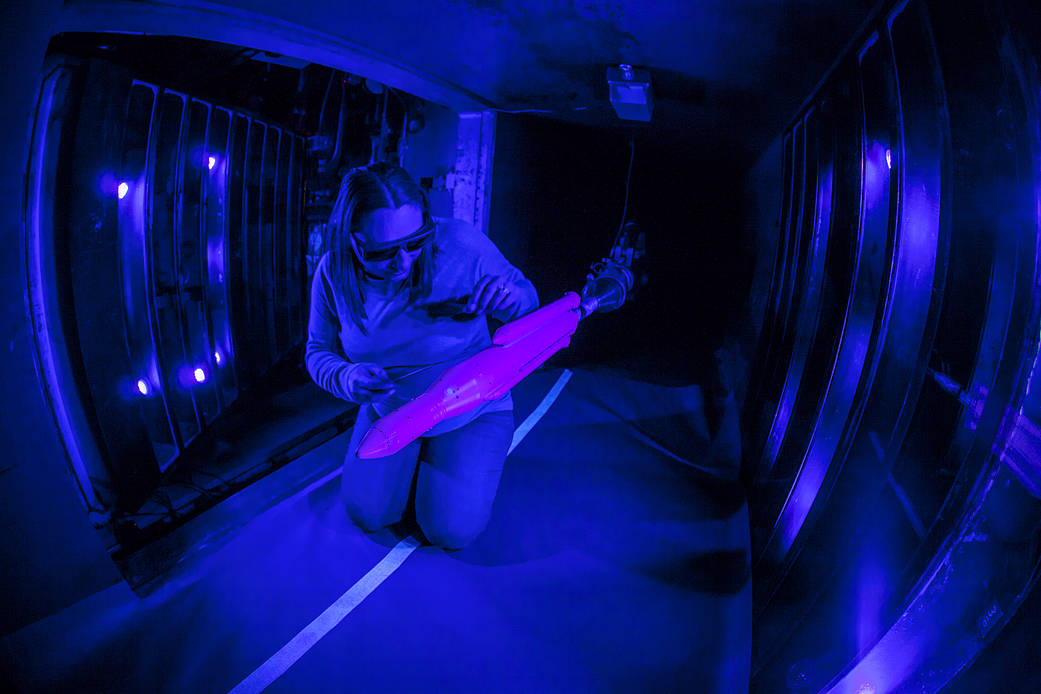位于弗吉尼亚州汉普顿的美国宇航局兰利研究中心的统一计划风洞内,航天工程师考特尼·温斯基为风洞测试准备了一个太空发射系统(SLS)火箭模型。0.8%比例模型上的粉色压敏涂料在高压气流中与氧气反应时会发出明亮的深红色辉光。这项测试使工程师们能够了解火箭发射过程中施加在火箭上的压力变化。
这一轮上升测试是针对火箭的一系列风洞测试中的最新测试,该测试将在执行月球任务时发射NASA的猎户座宇宙飞船。他们的首次综合测试飞行(又被称为探索任务-1)是在是在2020年,然后在2022年与机组人员进行一次测试飞行。Langley航空科学团队负责人Jeremy Pinier说:“测试需要在所有可能的火箭结构和发射的所有阶段进行,以了解火箭的性能。”
当他们测试为宇航员和货物设计的火箭的不同配置时,研究人员正在了解更多关于NASA为探索月球和火星而开发的火箭的结构和性能。这项特殊测试是SLS货物配置系列中的首批测试之一,SLS可以向月球轨道发送超过26吨(57,000磅)的货物。携带大型货物到月球的能力对于人类探索任务是必要的。
A Space Launch System (SLS) rocket model is prepped for wind tunnel testing by Courtney Winski, aerospace engineer, at the Unitary Plan Wind Tunnel at NASA’s Langley Research Center in Hampton, Virginia. The pink pressure-sensitive paint on the 0.8 percent scale model emits a bright crimson glow when reacting with oxygen in the presence of high-pressure airflows. This test allows engineers to understand changing pressures exerted on the rocket during a launch.
This round of ascent testing is latest in a series of wind tunnel tests for the rocket that will launch NASA’s Orion spacecraft on missions to the Moon. Their first integrated test flight, known as Exploration Mission-1, is targeted for 2020, followed by a test flight with crew in 2022. “Testing needs to happen in all potential rocket configurations and all stages of launch to know how the rocket will behave,” said Jeremy Pinier, aerosciences team lead at Langley.
As they test different configurations of the rocket designed for crew and cargo, researchers are learning more about the structure and properties of the rocket NASA is developing for exploration of the Moon and Mars. This particular test was one of the first in a series with the cargo configuration of SLS, which can send more than 26 metric tons (57,000) pounds to lunar orbit. The ability to carry large cargos to the Moon is necessary for human exploration missions.
Image Credit: NASA/David C. Bowman
Caption: Andrea Lloyd, NASA’s Langley Research Center







